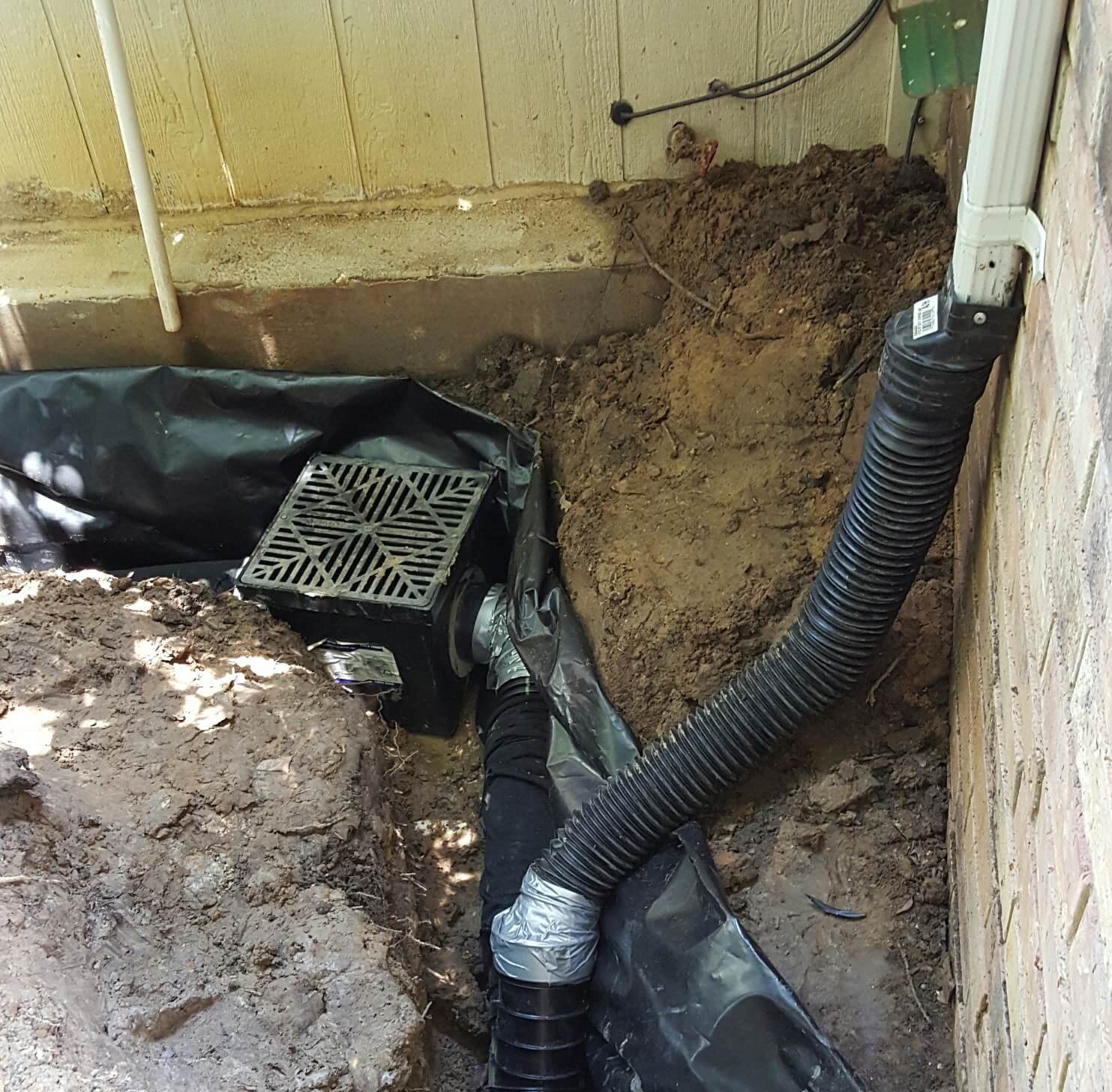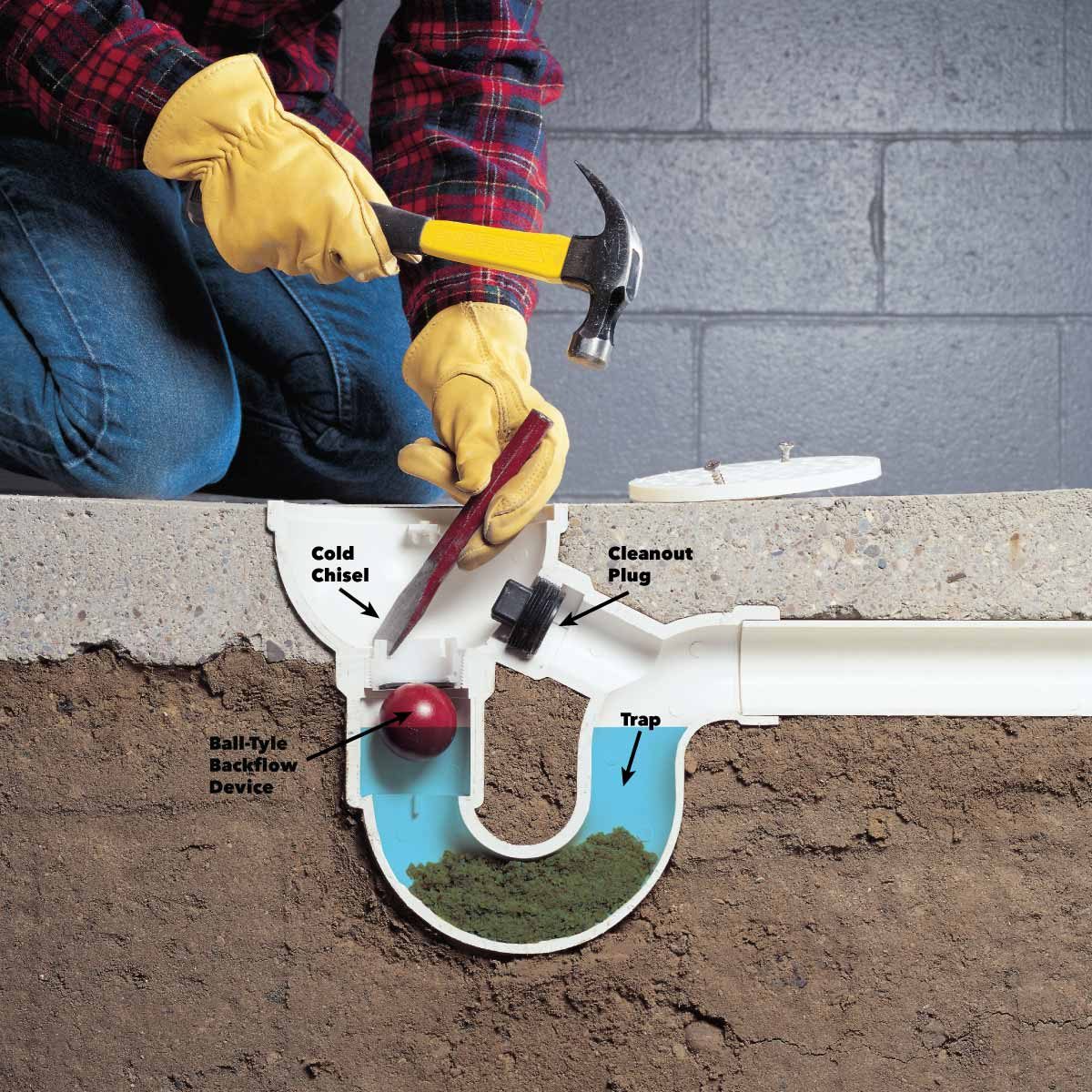Have you ever noticed a drain in your basement floor and wondered, “Where does that water go?” You’re not alone. The presence of a drain in your basement is often a curiosity, especially if you’re new to homeownership or haven’t had to deal with basement flooding. While it might seem like a simple feature, understanding how basement floor drains work and their importance is crucial for preventing water damage and keeping your home safe and dry.

Image: basement-tips.blogspot.com
I remember the first time I encountered a basement drain. My brand-new home had a finished basement, and I was excited to set up a home office downstairs. It was during a heavy rainstorm when I noticed water pooling near the drain. Panic set in until I discovered the drain was designed to collect water that might seep in from outside or condensation from the HVAC system. Discovering the purpose of the drain relieved my anxiety and highlighted the critical role it plays in keeping my basement dry and preventing potential damage.
The Purpose and Function of Basement Floor Drains
Basement drains are essential components of a home’s plumbing system, designed to collect and direct excess water away from the basement floor. This water can come from a variety of sources, including:
- Ground seepage: When the ground outside the house becomes saturated due to heavy rains, water can seep through cracks in the foundation walls or floor.
- Condensation: Humidity in the air, especially during colder months, can condense on basement walls and floors, creating moisture buildup.
- Plumbing leaks: Leaking pipes or faulty fixtures can contribute to water accumulation in the basement.
- Appliance malfunctions: A malfunctioning washing machine or sump pump can cause flooding, potentially overwhelming the floor drain.
These drains are typically connected to a system that diverts the water to a safe location. The most common routes for collected water include:
- Municipal sewer system: The water travels to the city’s sewer system via a pipe, usually through a trap that prevents sewer gases from entering the basement.
- Sump pump: A sump pump system is a common feature in basements, especially those prone to flooding. The sump pump continuously pumps water out of the pit and discharges it away from the foundation.
- Dry well: A dry well is a pit filled with gravel or rocks that allows excess water to percolate slowly into the ground.
Types of Basement Floor Drains
Basement floor drains come in various forms depending on their intended purpose and installation. Common types include:
- Floor drain with a grate: This type of drain is the most familiar and typically found in finished basements. It has a metal grate to cover the opening, allowing water to flow through while preventing debris from entering the drain.
- Sump pump pit drain: These drains are essential for sump pumps, collecting water from the pit and directing it to the pump for discharge. They often have a screen to prevent large debris from entering the system.
- French drain: A French drain is an underground system that uses a perforated pipe surrounded by gravel to collect and transport groundwater away from the foundation. It’s often installed along the perimeter of a basement to prevent water from pooling against the foundation walls.
Maintenance and Inspection Tips for Basement Floor Drains
Maintaining your basement floor drain is crucial for ensuring it functions effectively and prevents water damage. Here are some tips to keep your drain in top condition:
- Regular inspection: Check the drain regularly, especially after heavy rains or periods of high humidity. Look for signs of debris buildup, clogging, or cracks in the drain or surrounding area.
- Clean the drain: Remove any debris that has accumulated in the drain or grate to prevent clogging. You can use a drain snake or a plumbing tool to loosen any stubborn obstructions.
- Monitor the sump pump: If you have a sump pump, ensure it operates properly and is not showing signs of wear and tear. Regularly check the pump’s power supply, float switch, and discharge pipe for any issues.
- Keep the pit clean: Remove debris and sediment from the sump pump pit to prevent clogging.
- Check for leaks: Inspect the drain pipe for any leaks or cracks. Repair any leaks immediately to prevent water damage.

Image: cleverlearn-hocthongminh.edu.vn
Common Problems with Basement Floor Drains
Despite their importance, basement floor drains can sometimes experience issues. Common problems include:
- Clogging: Debris like leaves, dirt, or hair can accumulate in the drain, causing blockages that restrict waterflow.
- P trap blockage: The P trap, designed to prevent sewer gases from entering the basement, can become clogged, reducing the drain’s efficiency.
- Leakage: Cracks or leaks in the drain pipe can lead to water damage and must be addressed promptly.
- Sump pump failure: A malfunctioning sump pump can cause water to back up into the basement, overwhelming the drain.
- Improper installation: Improper installation of the drain or related systems can lead to various issues, including water damage and basement flooding.
Expert Advice for Basement Floor Drain Maintenance
For effective basement floor drain maintenance, consider following expert advice:
- Professional inspection: Schedule regular professional inspections of your basement floor drain and sump pump system. A qualified plumber can identify potential problems early and recommend preventative measures.
- Preventative maintenance: Implement a regular maintenance schedule to clean and inspect your drain, sump pump, and related systems. Proactive maintenance can prevent costly repairs and water damage.
- Educate yourself: Learn about the basics of basement drainage systems, understand potential issues, and know how to identify early signs of trouble.
- Address problems immediately: Don’t ignore any signs of leaks, clogs, or pump malfunctions. Promptly address any issues to prevent further damage and ensure your basement remains dry.
FAQ about Basement Floor Drains
Here are some frequently asked questions about basement floor drains:
Q: Is a basement floor drain required?
A: While not mandatory in all areas, basement floor drains are strongly recommended, especially in homes prone to flooding, high humidity, or potential ground seepage.
Q: How often should I clean my basement floor drain?
A: It’s recommended to clean your basement floor drain at least once a year, more frequently if you live in an area with heavy rains or high humidity.
Q: What if my basement doesn’t have a floor drain?
A: Having a drain installed is a good idea if your basement is prone to water accumulation. A qualified plumber can assess your situation and recommend the best drainage solution.
Q: Can I use a drain cleaner on my basement floor drain?
A: It’s best to avoid using harsh drain cleaners, as they can damage the pipes and potentially harm the environment. Instead, use a drain snake or plumber’s tool to clear clogs.
Drain In Basement Floor Where Does It Go
Conclusion:
Basement floor drains are essential components of a home’s plumbing system, providing a crucial safeguard against water damage. Understanding their purpose, function, and maintenance requirements is critical to protecting your basement and your home. By following the tips and advice provided, you can ensure your basement floor drain operates efficiently and provides peace of mind.
Are you interested in learning more about basement floor drains, or perhaps you have a specific question about your own drain system? Share your thoughts and questions in the comments below!





